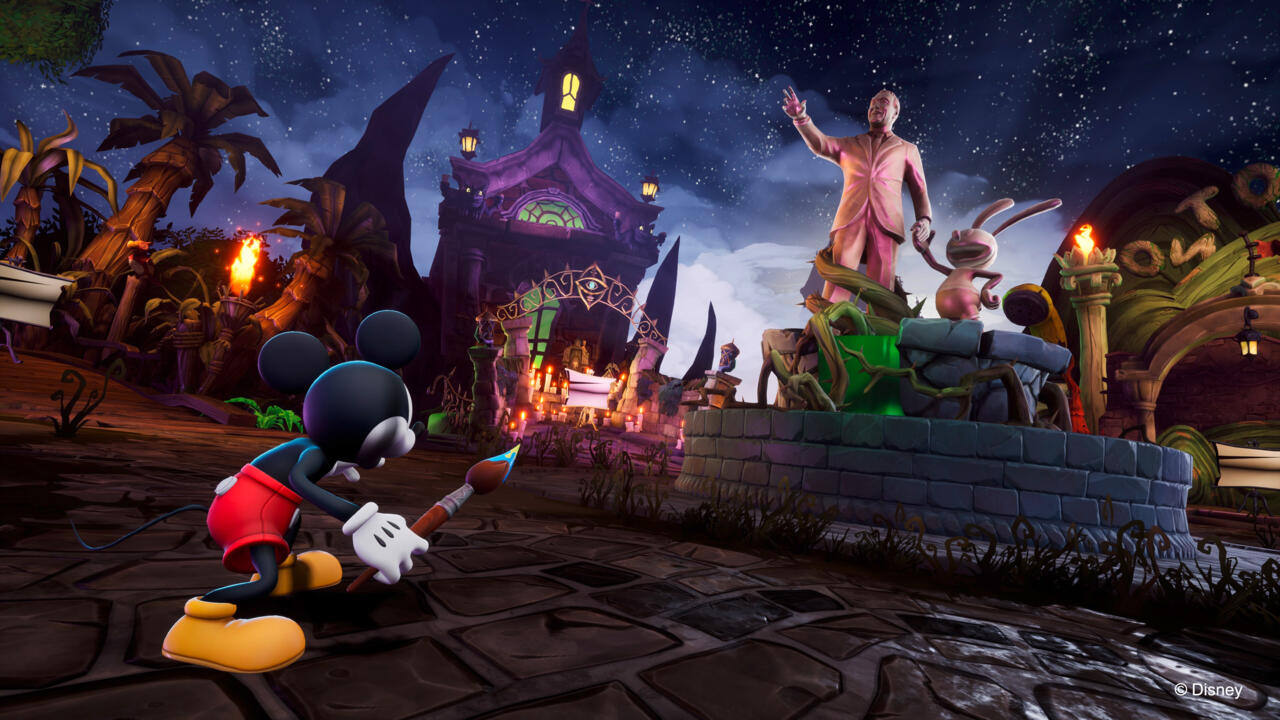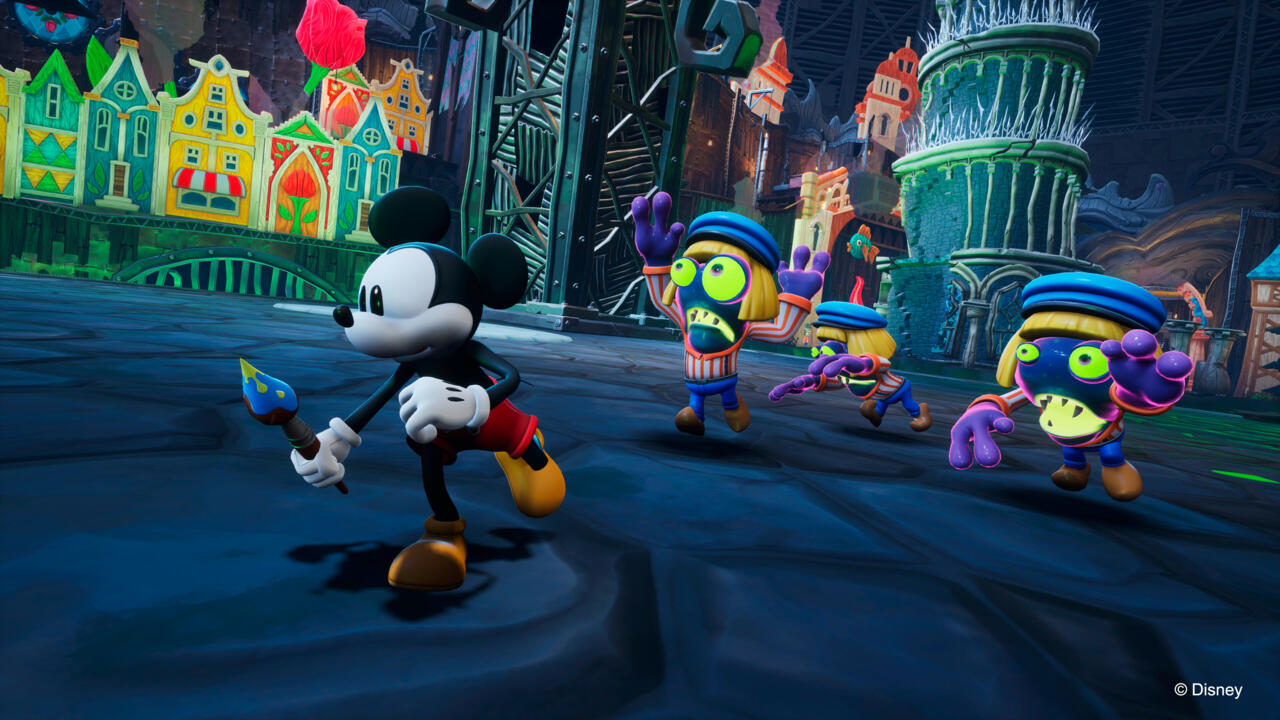14 years ago, Disney’s Epic Mickey was released exclusive to the Nintendo Wii, which is the only place it’s been playable since. It is, at the moment, shackled to the Wii–480p resolution, motion controls, and all. If you want to legally play the game today, you’d have to get your hands on a Wii (or a WiiU, for you select few), get a hard copy of the game, and pop it in. That would have remained the case, however, if it weren’t for its upcoming remake Epic Mickey Rebrushed which aims to bring the original game’s experience to modern consoles, with updated visuals and controls. And thank goodness, because otherwise, the game could have risked becoming a part of its own meta-commentary.
Epic Mickey follows Mickey Mouse on his discovery of a bizarro Disneyland, dour and gray in tone, where forgotten characters of Disney’s past like Oswald the Lucky Rabbit (and many more) all live. Haphazardly, Mickey procures a magic brush that holds the power to erase the world with paint thinner, or bring it to life with painted color. With this responsibility, Mickey is not only burdened with the knowledge of a past completely forgotten, but the power to restore or even change it.

At its core, the game is about what happens when the present is faced with having to amend its past. A past that hasn’t only been forgotten, but casted in a shadow so opaque, that it practically vanished altogether. Its narrative is a direct commentary on Mickey’s own success, which started all the way back in 1928, where he became the undisputed mascot of the Disney brand, despite many characters like Oswald having existed prior. In tackling this story, the original game, in turn, manifested its own narrative into reality, by repopularizing once forgotten Disney characters like Oswald, Horace Horsecollar, and Clarabelle Cow (just to name a few), and brought them back into the mainstream Disney ethos.
With the original version of the game nearly lost to sea of other games no longer commercially available today, Epic Mickey Rebrushed is yet another full circle moment for the game’s narrative, as this remake stops the game from being forgotten and abandoned on the Wii.
“This is a game about forgotten characters, and getting them back and allowing them to survive,” senior producer Pan Schröder told me. “For us, as the developer, it’s getting this game as a faithful remake in the hands of the players, and allowing it to live on too.”
From my hands-on time with Epic Mickey Rebrushed, it is very much a one-to-one remake of the original game, with all its assets faithfully recreated to match. However, just like Mickey armed with a brush to repair the past, developer Purple Lamp is trying to amend many of the game’s initial flaws in this new iteration. Oh, and of course, the motion controls.
“We had to change the controls, we had to enhance the camera, and we needed to translate motion controls to analog sticks, while needing to keep the heart of the game intact,” Schröder said.
Epic Mickey Rebrushed controlled well, and gave a much needed jolt in the arm for the rather bygone 3D platformers I miss. Playing on Nintendo Switch, controls were responsive, the world was as welcomingly dreary as I remembered in the original (albeit with a fresh coat of paint), and platforming while switching between paint and thinner to unlock new areas and solve puzzles performed with modern gaming expectations. Everything felt right in place with the original–so much so that I had nearly forgotten the game was originally only playable with motion controls (which is still a control option for those purests out there).

In GameSpot’s original review, reviewer Tom Mc Shea criticized the game’s imprecise controls, camera movement, and its lack of direction, but applauded its use of the Disney license and unique story and world. In the short time I played its remake, it’s clear developer Purple Lamp isn’t changing the game’s appearance or story, only repainting its flaws where it matters most. Such as adding quality-of-life features like guides to assist players where to go when they’re lost, or a way to keep track of sidequests.
When done right, a video game remake can serve as a means to make sure older games tethered to the past are playable today, but preserve the original’s intent as well, flaws and all. So having motion controls as an option, while offering more modern controls, allows new players to experience the game as it was originally intended 14 years ago, without compromising its core heart and story.
In bringing this game back to modern consoles, it fulfills its own legacy to make sure the past is not forgotten, and from my hands-on time, it’s clear developer Purple Lamp is heading on the right path to reintroduce this cult Mickey game in its best light to modern audiences come fall of this year.






















+ There are no comments
Add yours